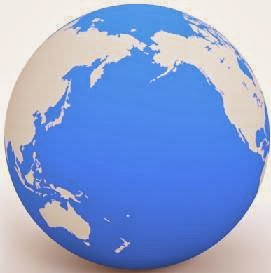< 1. one of the Four Heavenly Kings, Beomeosa temple, South
Korea >
When I am traveling
in Korea and China, I wonder why it differs from Japanese Buddha statues.
The Japanese Buddha
statues began from imitation of the Korean Peninsula and China.
The difference seemed
to have become big gradually.
I investigate about
the difference between Korea and Japanese Buddha statue today.
韓国や中国を旅行していると、日本の仏像となぜ違うのか不思議に思う。
日本の仏像は朝鮮半島と中国の模倣から始まりました。
いつしかその違いは大きくなったようです。
今日は、韓国と日本の仏像の違いについて探ってみます。
< 2. two of the Four Heavenly Kings, Pulguksa temple, South
Korea >
The Four Heavenly Kings
of Beomeosa temple and Pulguksa temple seems to be relatively new.
In these images, there
is a different characteristic from Japanese things.
The greatest thing of the
different expression is a round big eye.
Furthermore, a dragon
and a ball, a Biwa (stringed instrument) in his hand is different from Japanese
things.
梵魚寺と仏国寺の四天王像は比較的新しいように思える。
これらの像には、日本の四天王と異なる特徴がある。
異なる表情の最大のものは丸い大きな目です。
もう一つは、手に持っている龍と玉、琵琶(弦楽器)が日本と異なります。
< 3. Four Heavenly Kings, Kaijyusen temple, Kyoto, 8~13th century >
This is the typical Four
Heavenly Kings of Japan.
Above-mentioned Four
Heavenly Kings of Korean does not have a raged aspect, and there is rather the atmosphere of the welcome in the aspect.
On the other hand, I
seem to have not dignity in the aspect.
これは日本の四天王の代表的な姿です。
韓国の上述の四天王には憤怒相が無く、むしろ歓迎しているような雰囲気がある。
一方で、私には威厳が無いように思える。
We look at early Four
Heavenly Kings of Korean Peninsula
韓国の初期の四天王像を見ます
< 4. statues of
Sokkuram temple, Korean, Silla period, 774 years >
Above fig.: a Buddha in central, Kongorikishi on both
sides, and carved relief of Four Heavenly Kings of the gateway.
Below fig.: enlarged image of Four Heavenly Kings.
Most of early Four
Heavenly Kings are stone statues, and their expression is not clear.
Then, we look at a
slightly old Four Heavenly Kings in China.
上図:中央に如来、左右に金剛力士、通路左右に4体の四天王のレリーフ。
下図:通路の四天王の2体を拡大。
初期の四天王と金剛力士像は石像が多く、表情が鮮明でない。
そこで少し古い中国の四天王像を見ます。
< 5. statues in
Longmen Grottoes, China, Tang period, 675 years >
Left side: one of Four
Heavenly Kings with a small story pagoda.
Right side: this Kongorikishi
image resembles Japanese thing.
When Buddhism was spread
from China to Korean Peninsula, the Four Heavenly Kings seems to have had a
raged aspect.
Gradually, the statues
were covered with a crown, changed the belongings, and changed the facial expression, too.
左側:宝塔を持っている四天王。
右側:この金剛力士像は日本のものに似ている。
中国から仏教が伝播した初期、朝鮮半島の四天王像も憤怒相を持っていたのだろう。
それがいつしか、冠を被り、持ち物を変え、表情も変わっていった。
< 6. amitabha Buddha triad, Muwis Temple, Korea, Korea
Dynasties period,1476 years >
I think that the Buddha
statues are typical things, when I watched with sightseeing of Korea.
Maybe it's because it is
covered gold leaf, but I think it is considerably different from Japanese
statues.
The facial expression and
head of the center Buddha, and a crown of right side Bodhisattva is different
from Japanese statues.
Especially the outline
of the face became richly square from the slender face of old times.
これらの仏像は、私が韓国の観光で見た仏像の平均的な姿だと思う。
金箔のせいかもしれないが、日本の如来三尊像とはかなり違う印象を受ける。
中央の如来の表情と頭、右の菩薩像の冠が異なる(左は地蔵菩薩か)。
特に顔の輪郭が昔の細面から豊かに角張っている。
< 7. Buddha seated, Buseok Temple, Korea, Goryeo, 11~12th
century >
This statue is several
hundred years older than the statues of the above image.
I feel it is near to the
aspect of the Japanese statues.
Next time, I infer
what occurred in Buddha statues of Korea.
この像は上図の如来像より数百年古く、表情に日本の如来像に近いものを感じる。
次回は、韓国の仏像世界に何が起きたかを推理します。
































